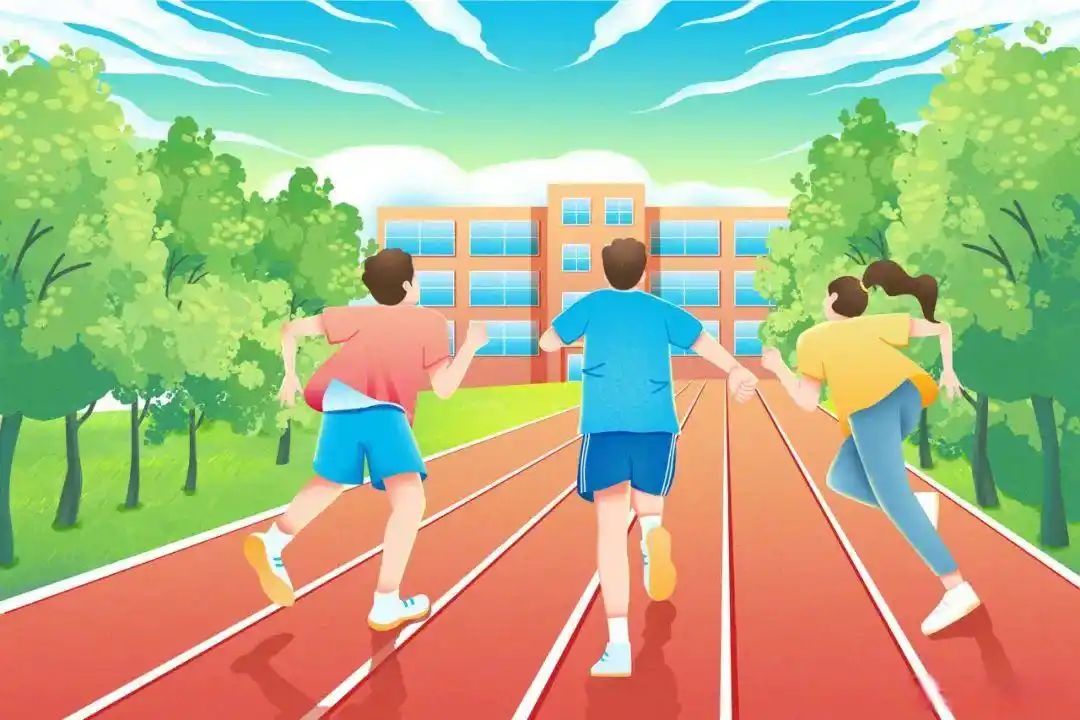FOCUS ON HOT SPOTS
Get moving, teenagers! Say goodbye to obesity~
Published:
2025-04-30
The issue of adolescent obesity is gradually becoming the focus of public attention. Obesity not only weakens the physical fitness of teenagers, but may also pose hidden dangers to their health, such as increasing the risk of chronic diseases. Scientific and reasonable exercise intervention is an effective way to help teenagers control their weight and improve their health level.

The positive impact of exercise on adolescent obesity
1
Improve body composition
Exercise can effectively reduce the body fat rate of teenagers and increase muscle mass. Studies have shown that scientific exercise has a positive effect on reducing the body mass index (BMI) of obese teenagers, reducing abdominal fat and total fat.
For example, regular low-intensity aerobic exercise can directly consume a lot of fat; strength training can increase the basal metabolic rate and help the body consume calories more efficiently when it is quiet, thereby reducing fat accumulation.
2
Improve cardiopulmonary function
Obese teenagers often have relatively weak cardiopulmonary function, and exercise can significantly improve this situation. Through continuous exercise training, adolescents' cardiopulmonary endurance is enhanced, and they can better cope with the physical demands of daily activities.
For example, regular aerobic exercise such as running and swimming can improve cardiopulmonary function and reduce the risk of cardiovascular disease caused by obesity.
3
Enhance mental health
Exercise can not only improve physical condition, but also have a positive impact on the mental health of teenagers. During exercise, the body secretes neurotransmitters such as endorphins, which can reduce stress, improve mood, and help teenagers build confidence.
For obese teenagers, the psychological benefits of exercise can help them better cope with the psychological pressure that may be caused by weight problems.
Tailor-made exercise list for children
Aerobic exercise
Aerobic exercise is the key to improving adolescent obesity. It is recommended that teenagers do at least 150 minutes of moderate-intensity aerobic exercise per week.
1
Running
Running is a simple and effective aerobic exercise. Teenagers can start with jogging and gradually increase speed and distance. It is recommended that each run last 20 to 30 minutes, and the speed should be kept at a level that can speak normally but is slightly strenuous.
2
Swimming
Swimming is a full-body exercise that can exercise multiple muscle groups while having less impact on joints, especially for those who are overweight. Teenagers can choose their favorite swimming style, such as breaststroke, freestyle, etc., and each swimming time should be no less than 30 minutes.
3
Bicycle
Bicycle can be used as a daily travel method or as a form of exercise. Teenagers can choose to ride in the park or the suburbs. Each ride time is recommended to be 45 to 60 minutes, and the speed should be kept at a state where they can breathe normally.
When riding, necessary protective measures should be taken, including wearing a helmet, using goggles, wearing reflective clothing, and equipping gloves and knee pads to ensure that the risk of accidents is minimized while enjoying the fun of riding.
Strength training
Strength training helps to increase muscle mass and increase basal metabolic rate. It is recommended that teenagers do strength training 2 to 3 times a week.
1
Push-ups
Push-ups mainly exercise the muscles of the chest, shoulders and arms. Teenagers can start with standard push-ups. If they lack strength, they can do kneeling push-ups first. Perform 3 to 4 sets of 8 to 12 times each training.
2
Squats
Squats mainly exercise the muscles of the legs and buttocks. Teenagers should pay attention to maintaining the correct posture when doing squats, and their knees should not exceed their toes. Perform 3 to 4 sets of 12 to 15 times per set for each training session.
3
Sit-ups
Sit-ups mainly exercise the abdominal muscles. Teenagers can choose to do sit-ups on a flat ground, place their hands on the sides of their ears, and use their abdominal strength to drive their bodies to stand up. Perform 3 to 4 sets of 15 to 20 times per set for each training session.
Fun sports
In order to increase the enthusiasm of teenagers to participate in sports, you can combine a variety of sports to increase the fun.
1
Football
Football is a team sport that can exercise teenagers' coordination, flexibility and teamwork skills. Teenagers can join the school's football team or the community's football club and train or play 2 to 3 times a week.
2
Basketball
Basketball is also a team sport suitable for teenagers to do in their spare time. Through dribbling, shooting and other actions, teenagers can exercise upper limb strength, lower limb strength and cardiopulmonary function.
3
Rope skipping
Rope skipping is a simple and efficient sport that can consume a lot of calories in a short time. Teenagers can choose to skip rope alone or with multiple people, and each skipping time should be no less than 10 minutes.
Double the effect of exercise? See here
Individualized principle
Each teenager has different physical conditions and athletic abilities, so exercise intervention needs to follow the principle of individualization. Before starting an exercise plan, it is recommended that teenagers first undergo a health check and exercise ability test to understand their physical condition, and then choose appropriate sports and intensity according to their own situation.
02
Gradual progress
The intensity and time of exercise should be increased gradually to avoid physical injuries caused by excessive exercise. Teenagers can start with low-intensity exercise, and then increase the intensity and time of exercise after gradually adapting.
03
Interest-oriented
Interest is an important driving force for teenagers to persist in exercise. Parents and teachers should encourage teenagers to choose their favorite sports and create a good exercise environment for them.
04
Safety first
Pay attention to safety during exercise, use sports equipment correctly, and avoid injuries. When teenagers are exercising, it is best to have the company and guidance of parents or coaches.








